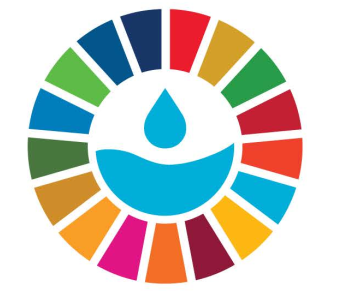Youth for the Future of the Columbia River Basin
North American Youth Parliament for Water-USA
(
Civil society organization
)
#SDGAction50665
Description
NAYPW brings together youth and young professionals to develop sustainable solutions for water issues in North America based on the United Nations’ SDG 6. The “Youth for the Future of the Columbia River Basin” represents the commitment of young people in the Columbia River Basin following the NAYPW Youth Forums for the Columbia River . The Forums on 11 February, 2022, was an effort to bring awareness to the youth voices of the Columbia River Basin in this closing window of opportunity to be heard by Columbia River Treaty negotiators.
The objectives of the Vision effort are to: gather youth from across the transboundary Columbia River Basin; mobilize and educate youth on issues facing the Columbia River Basin; empower youth with knowledge on action opportunities and potential partners; collate concerns and visions for the future of youth in the Basin; and promote concerns and commitments to action in final years of the Columbia River Treaty negotiations and future of the Columbia River Basin.
Our target audience for the project is youth and young professionals in the Columbia River Basin (ages 16-35 years old), as well as additional community leaders and experts to facilitate intergenerational knowledge transfer and listening across the basin geography and generations. The final output report, “Youth Vision and Actions for the Future of the Columbia River,” will be a tool to communicate the concerns of youth in the basin to decision-makers and negotiators in the basin.
SDG 6 “Ensure availability and sustainable management of water and sanitation for all” is supported in this commitment through the integration of youth and young professionals in the Columbia River Basin into more long-term water management planning. Target 6.b calls for strengthened community participation in water management. Youth and young people represent the present and future of their communities. This commitment and effort brings youth, and therefore their communities and futures, into greater engagement with the Columbia River Basin management system through education and mobilization. Additionally, as youth and young people from this effort have a unique focus on ecosystem protections, Target 6.6 to protect and restore water-related ecosystems will also be supported through this commitment. The consistent pressure of youth presence in this basin will encourage current and future policy makers to focus on this ecosystem protection goals.
Goal 13 for climate change, Target 13.2 will be supported by this commitment to youth engagement in the Columbia River Basin. Youth know that the current hydroelectric infrastructure in the basin is not climate-resilient and have specific expectations and ideas to address this issue. Increased youth engagement and inclusion in Columbia River governance processes will embed greater climate change adaptive measures into the future of Columbia River basin management policies in the USA and Canada.
Goal 15 Targets 15.5 and 15.6 are enhanced by youth engagement in the Columbia River Basin. Youth are aware of the past of the Columbia River defined by aquatic species loss, particularly of salmonid populations of cultural and spiritual importance to the Indigenous communities in the region. The unified youth voice for the Columbia River Basin’s future calls for immediate action from the federal governments in the USA and Canada to address the loss of salmon in the region in the future through more equitable and fair recognition of the multiple uses and needs of communities in the basin for the ecosystem services it provides. More youth engagement in the basin will pressure policymakers to invest in this outcome unlike what has defined the history of the basin in loss of salmon populations as the cost of hydropower development and flood control, which are now outdated policies as a result of climate change driven alterations to the hydrology of the basin.
Global Youth Movement for Water
SDGS & Targets
Goal 6
Ensure availability and sustainable management of water and sanitation for all
6.1
By 2030, achieve universal and equitable access to safe and affordable drinking water for all
6.1.1
Proportion of population using safely managed drinking water services
6.2
By 2030, achieve access to adequate and equitable sanitation and hygiene for all and end open defecation, paying special attention to the needs of women and girls and those in vulnerable situations
6.2.1
Proportion of population using (a) safely managed sanitation services and (b) a hand-washing facility with soap and water
6.3
By 2030, improve water quality by reducing pollution, eliminating dumping and minimizing release of hazardous chemicals and materials, halving the proportion of untreated wastewater and substantially increasing recycling and safe reuse globally
6.3.1
Proportion of domestic and industrial wastewater flows safely treated
6.3.2
Proportion of bodies of water with good ambient water quality
6.4
6.4.1
Change in water-use efficiency over time
6.4.2
Level of water stress: freshwater withdrawal as a proportion of available freshwater resources
6.5
By 2030, implement integrated water resources management at all levels, including through transboundary cooperation as appropriate
6.5.1
Degree of integrated water resources management
6.5.2
Proportion of transboundary basin area with an operational arrangement for water cooperation
6.6
6.6.1
Change in the extent of water-related ecosystems over time
6.a
6.a.1
Amount of water- and sanitation-related official development assistance that is part of a government-coordinated spending plan
6.b
Support and strengthen the participation of local communities in improving water and sanitation management
6.b.1
Proportion of local administrative units with established and operational policies and procedures for participation of local communities in water and sanitation management
Goal 13
Take urgent action to combat climate change and its impacts
13.1
Strengthen resilience and adaptive capacity to climate-related hazards and natural disasters in all countries
13.1.1
Number of deaths, missing persons and directly affected persons attributed to disasters per 100,000 population
13.1.2
Number of countries that adopt and implement national disaster risk reduction strategies in line with the Sendai Framework for Disaster Risk Reduction 2015–2030
13.1.3
Proportion of local governments that adopt and implement local disaster risk reduction strategies in line with national disaster risk reduction strategies
13.2
Integrate climate change measures into national policies, strategies and planning
13.2.1
Number of countries with nationally determined contributions, long-term strategies, national adaptation plans and adaptation communications, as reported to the secretariat of the United Nations Framework Convention on Climate Change
13.2.2
Total greenhouse gas emissions per year
13.3
Improve education, awareness-raising and human and institutional capacity on climate change mitigation, adaptation, impact reduction and early warning
13.3.1
Extent to which (i) global citizenship education and (ii) education for sustainable development are mainstreamed in (a) national education policies; (b) curricula; (c) teacher education; and (d) student assessment
13.a
Implement the commitment undertaken by developed-country parties to the United Nations Framework Convention on Climate Change to a goal of mobilizing jointly $100 billion annually by 2020 from all sources to address the needs of developing countries in the context of meaningful mitigation actions and transparency on implementation and fully operationalize the Green Climate Fund through its capitalization as soon as possible
13.a.1
Amounts provided and mobilized in United States dollars per year in relation to the continued existing collective mobilization goal of the $100 billion commitment through to 2025
13.b
Promote mechanisms for raising capacity for effective climate change-related planning and management in least developed countries and small island developing States, including focusing on women, youth and local and marginalized communities
13.b.1
Number of least developed countries and small island developing States with nationally determined contributions, long-term strategies, national adaptation plans and adaptation communications, as reported to the secretariat of the United Nations Framework Convention on Climate Change
Goal 15
Protect, restore and promote sustainable use of terrestrial ecosystems, sustainably manage forests, combat desertification, and halt and reverse land degradation and halt biodiversity loss
15.1
By 2020, ensure the conservation, restoration and sustainable use of terrestrial and inland freshwater ecosystems and their services, in particular forests, wetlands, mountains and drylands, in line with obligations under international agreements
15.1.1
15.1.2
15.2
By 2020, promote the implementation of sustainable management of all types of forests, halt deforestation, restore degraded forests and substantially increase afforestation and reforestation globally
15.2.1
15.3
By 2030, combat desertification, restore degraded land and soil, including land affected by desertification, drought and floods, and strive to achieve a land degradation-neutral world
15.3.1
15.4
By 2030, ensure the conservation of mountain ecosystems, including their biodiversity, in order to enhance their capacity to provide benefits that are essential for sustainable development
15.4.1
15.4.2
15.5
Take urgent and significant action to reduce the degradation of natural habitats, halt the loss of biodiversity and, by 2020, protect and prevent the extinction of threatened species
15.5.1
15.6
Promote fair and equitable sharing of the benefits arising from the utilization of genetic resources and promote appropriate access to such resources, as internationally agreed
15.6.1
15.7
Take urgent action to end poaching and trafficking of protected species of flora and fauna and address both demand and supply of illegal wildlife products
15.7.1
15.8
By 2020, introduce measures to prevent the introduction and significantly reduce the impact of invasive alien species on land and water ecosystems and control or eradicate the priority species
15.8.1
15.9
By 2020, integrate ecosystem and biodiversity values into national and local planning, development processes, poverty reduction strategies and accounts
15.9.1
(a) Number of countries that have established national targets in accordance with or similar to Aichi Biodiversity Target 2 of the Strategic Plan for Biodiversity 2011–2020 in their national biodiversity strategy and action plans and the progress reported towards these targets; and (b) integration of biodiversity into national accounting and reporting systems, defined as implementation of the System of Environmental-Economic Accounting
15.a
Mobilize and significantly increase financial resources from all sources to conserve and sustainably use biodiversity and ecosystems
15.a.1
(a) Official development assistance on conservation and sustainable use of biodiversity; and (b) revenue generated and finance mobilized from biodiversity-relevant economic instruments
15.b
Mobilize significant resources from all sources and at all levels to finance sustainable forest management and provide adequate incentives to developing countries to advance such management, including for conservation and reforestation
15.b.1
(a) Official development assistance on conservation and sustainable use of biodiversity; and (b) revenue generated and finance mobilized from biodiversity-relevant economic instruments
15.c
Enhance global support for efforts to combat poaching and trafficking of protected species, including by increasing the capacity of local communities to pursue sustainable livelihood opportunities
15.c.1
SDG 14 targets covered
| Name | Description |
|---|
Deliverables & Timeline
Resources mobilized
Partnership Progress
Feedback
Action Network

Timeline
Entity
Region
- North America
Other beneficiaries
Youth and Young Professionals
Communities in the Pacific Northwest of North America
More information
Countries
Contact Information
Erica-Lynn, Director

